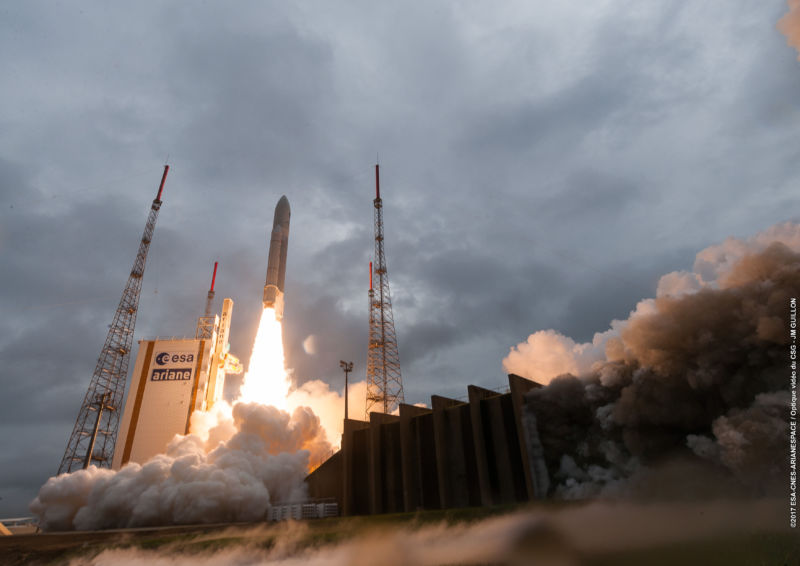
On Wednesday night, an Ariane 5 booster took off from Kourou, a launch site in French Guiana operated by a European rocket company. The launch proceeded normally until shortly before nine minutes and 26 seconds into the flight, when ground tracking stations lost contact with the rocket. It was feared that the launch vehicle and its two satellites were lost.
But later Wednesday night, and again on Thursday, both of the satellite operators, SES and Eutelsat, separately confirmed that they were in contact with their respective spacecraft, the SES-14 satellite and the Al Yah 3 satellite. They were not in their proper geostationary orbits, but that could be fixed, the satellite companies said.
Just how far off those orbits became clear publicly later on Thursday, when data about them started appearing in satellite trackers. According to one orbital expert, Jonathan McDowell, each of the satellites had reached near the 45,000km heights where they need to be, but the inclinations were way off.
“Major anomaly”
The altitudes are critical, as the Ariane 5 rocket launches geostationary satellites into a transfer orbit. In this orbit, the satellite cruises from within a few hundred kilometers of Earth out to about 45,000km, and when it reaches this apogee, the satellite fires its rocket to place it in a permanent geostationary orbit. The inclinations are more problematic—this is the angle between the satellite's orbit and the equator. The SES-14 and Al Yah 3 satellites were supposed to be at a 3-degree inclination very near the equator but are instead at 20 degrees.
"I characterize this as a major anomaly, but I score it a partial success for launch vehicle statistics," McDowell said. "The orbit is usable but will require several years worth of satellite station-keeping propellant to get the payloads to the right final orbit." This is obviously preferable to losing the satellites entirely.
For its part, the Europe-based Arianespace is not saying too much about what happened with its rocket. "Initial investigations show that the situation results from a trajectory deviation," the rocket operator stated. "Arianespace has set up an independent investigation commission chaired by ESA’s General Inspector. The upcoming launch campaigns currently underway at the Guiana Space Centre proceed as scheduled."
NASA has been closely watching this launch of the Ariane 5 rocket, which has a very good overall record of safety. Not only does the space agency have a scientific payload attached to the SES-14, the GOLD mission, it intends to launch the $10-billion James Webb Space Telescope on an Ariane 5 rocket in 2019. NASA will therefore likely have a role in the accident investigation in the coming months.
reader comments
220